Cyber Security Services
Introduction – Cyber Security Services
Cybersecurity has emerged as a critical concern in our interconnected world. Given the rising prevalence of cyber threats, it is imperative for both businesses and individuals to prioritise the protection of their digital assets. One effective way to achieve this is by implementing a robust cyber security strategy, which may include engaging a Managed Cybersecurity and Compliance (CNC) solution provider.
By partnering with a knowledgeable and experienced company, you can receive expert guidance and improvements tailored to your specific needs. Safeguarding against potential risks is of utmost importance, and this page aims to explore the significance of cyber security and why CNC is an effective approach to ensure your safety and security in today’s technological landscape. Throughout this discussion, we will delve into various aspects of cyber security and how CNC effectively addresses them.
What is Cyber Security?- Cyber Security Services
The primary objective of cyber security is to protect sensitive information and ensure the confidentiality, integrity, and availability of digital assets. This includes protecting data from unauthorised modification or deletion, preventing unauthorised access to networks and systems, and mitigating the potential impact of cyber-attacks.
One of the significant challenges in cyber security is the ever-evolving landscape of threats. Attackers continuously develop new techniques and exploit vulnerabilities in systems, making it essential for organisations to stay proactive in their defence strategies. Cyber security measures encompass a variety of areas, including:

Endpoint protection is a fundamental component of cyber security. It involves securing individual devices, such as computers, laptops, and mobile devices, against various threats. CNC employs robust endpoint protection solutions to detect and prevent malware, unauthorised access, and data breaches. This ensures that all endpoints within an organisation’s network are shielded from potential vulnerabilities.
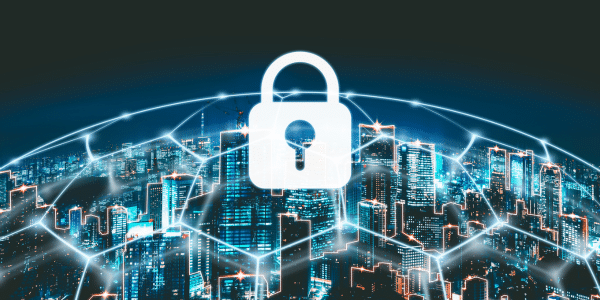
Network security encompasses various measures to safeguard the integrity and confidentiality of data transmitted across a network. These measures include implementing strong passwords, encryption protocols, firewalls, and intrusion detection systems. Regular security assessments and employee training on best practices are vital to maintain a secure network. Backup solutions and incident response plans offer resilience against potential breaches, ensuring swift recovery.

Monthly vulnerability scanning is essential in cybersecurity. It entails regularly scanning systems, networks, and applications to identify potential weaknesses. Specialized software tools are used to examine outdated software, misconfigurations, and known vulnerabilities. Conducting these scans monthly helps organizations stay proactive, addressing security risks before they are exploited. It enhances protection, minimizes the risk of cyberattacks, and safeguards sensitive data.

Application security is crucial for protecting software against vulnerabilities. It involves secure coding, assessments, and access controls. Regular updates and training on secure practices are vital. Incident response plans and patch management ensure prompt actions against threats.

Security awareness and training are vital in cybersecurity, educating employees about risks and promoting a culture of vigilance. It involves raising awareness about phishing, social engineering, and data protection practices. Regular training reinforces security protocols and safe browsing habits. Simulated phishing exercises identify areas for improvement, empowering employees with knowledge to enhance overall security.
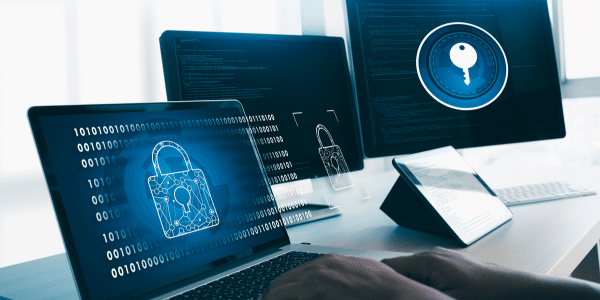
Incident response and recovery are crucial in cybersecurity, involving prompt breach detection, containment, and countermeasures. Incident reporting, response plans, and drills enhance preparedness. Post-incident analysis improves security controls. Effective response strategies minimise damage and restore services swiftly.
The Role of CNC in Cyber Security
Cybersecurity for your data, assets, and reputation
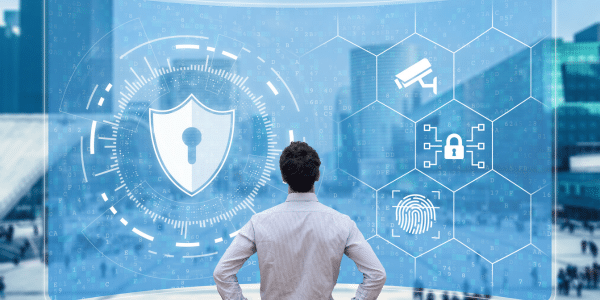
CNC Ltd, a leading provider in the field of cyber security, plays a crucial role in safeguarding organisations of all sizes against digital threats. With their comprehensive range of services and expertise, CNC Ltd helps businesses fortify their cyber defences and mitigate risks effectively. Let’s explore some key components of CNC Ltd’s cyber security solutions and how they address crucial aspects of protecting digital infrastructure:
Is your IT secure enough?
This short video will show if there’s more you need to do to protect your business

Managed Endpoint Protection
Managed Endpoint Protection
Managed Endpoint Protection is a crucial part of cyber security, safeguarding all devices connected to a network, such as laptops, mobile phones, and servers. It provides continuous protection against a wide range of cyber threats.
Our managed security services ensure comprehensive cyber security coverage for every asset on your network, ensuring that all devices are protected. We offer:
- Round-the-clock, 365-day support for active cyber security defence
- A dedicated Security Operations Centre (SOC) that constantly monitors your network for cyber security purposes
- Highly trained staff following strict risk management, threat intelligence, and security standards
We provide complete coverage for all your devices, including laptops, desktops, mobile devices, tablets, and servers. Our services include:
- Centralised management for efficient cyber security measures across your entire network
- Real-time virus definition updates to stay ahead of the latest cyber security threats
Our proactive Endpoint Protection service integrates seamlessly with your existing cyber security strategies. We collaborate closely with Sentinel One, an advanced and AI-driven endpoint security platform. This integration offers:
- Cutting-edge behavioural analysis and monitoring for real-time threat detection
- Prompt identification and isolation of malicious applications and infected assets
Through our partnership with Sentinel One, we provide:
- Analysis of identified cyber threats by our dedicated Security Operations Centre (SOC)
- Development of effective cyber security countermeasures
In summary, our Managed Endpoint Protection service provides non-technical individuals with easy-to-understand, enterprise-grade cyber security. We offer continuous threat detection, incident response, and remediation, all backed by a dedicated SOC. With our service, you can rest assured that your devices are protected around the clock, allowing you to focus on your core business without worrying about cyber security threats.

Network Security
Network Security
Network security is a crucial aspect of cyber security that focuses on protecting networks, systems, and data from unauthorised access, attacks, and breaches. In an increasingly interconnected world, where businesses and individuals heavily rely on digital infrastructure, ensuring robust network security measures is vital to safeguarding sensitive information and maintaining the integrity of cyber ecosystems. This article aims to provide a simplified understanding of network security within the broader field of cyber security, emphasising its importance and key components.Understanding Network Security
Network security involves the implementation of various measures to protect computer networks and their associated devices from unauthorised access, disruptions, and malicious activities. It encompasses both hardware and software solutions designed to create multiple layers of defence to mitigate risks and maintain the confidentiality, integrity, and availability of network resources.Importance of Network Security in Cyber Security
Network security serves as a crucial pillar of overall cyber security strategy. By implementing robust network security measures, organisations and individuals can:Protect Sensitive Data
Network security helps safeguard confidential information, such as personal data, financial records, intellectual property, and trade secrets, from unauthorised access or theft.Prevent Unauthorised Access
By establishing strong authentication mechanisms, encryption protocols, and access controls, network security prevents unauthorised individuals or malicious actors from gaining entry into a network or system.Defend Against Cyber-Attacks
Network security measures, such as firewalls, intrusion detection systems (IDS), and intrusion prevention systems (IPS), actively monitor and block suspicious network traffic, thwarting various types of cyber-attacks, such as malware infections, distributed denial-of-service (DDoS) attacks, and phishing attempts.Ensure Business Continuity
By implementing robust network security measures, organisations can minimise the impact of cyber incidents and maintain the availability of critical systems and services, preventing disruptions that could lead to financial loss, reputational damage, or regulatory non-compliance.Key Components of Network Security
To establish a strong network security posture, several essential components should be considered:Firewalls
Firewalls act as a barrier between internal networks and external entities, monitoring incoming and outgoing network traffic based on predefined security rules. They filter and block potentially malicious data packets, preventing unauthorised access.Intrusion Detection Systems (IDS) and Intrusion Prevention Systems (IPS)
IDS and IPS tools monitor network traffic for suspicious patterns and behaviours, alerting administrators or automatically taking action to prevent intrusions or attacks.Virtual Private Networks (VPNs)
VPNs provide secure and encrypted connections over public networks, enabling remote users to access private networks securely, protecting data transmission from eavesdropping and unauthorised interception.Secure Wi-Fi Networks
Implementing strong encryption (e.g., WPA2 or WPA3) and robust authentication protocols on Wi-Fi networks helps prevent unauthorised access and protects against network eavesdropping.Network Segmentation
Dividing a network into segments using firewalls or virtual LANs (VLANs) limits the lateral movement of threats and reduces the potential impact of a breach.Security Patching and Updates
Regularly applying security patches and updates to network devices, operating systems, and software helps address known vulnerabilities and strengthens network security.Conclusion
Network security plays a vital role in cyber security, providing essential safeguards to protect digital assets and maintain the integrity of networks and systems. By understanding the importance of network security and implementing robust measures, individuals and organisations can mitigate risks, defend against cyber-attacks, and ensure the confidentiality, integrity, and availability of their data and resources. Stay vigilant, keep networks secure, and stay ahead in the dynamic landscape of cyber security.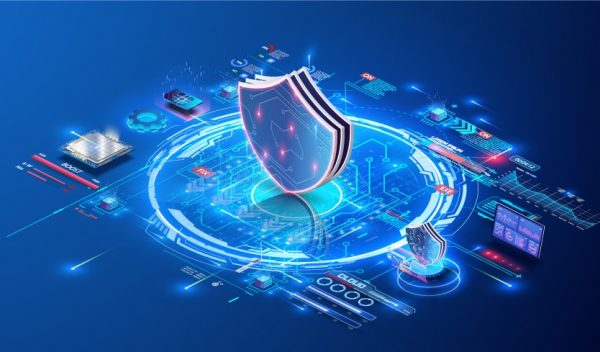
Application Security
Application Security
Application security is a vital aspect of cybersecurity that focuses on protecting computer programs, software applications, and the data they handle from cyber threats and malicious attacks. In today’s interconnected world, where technology plays a significant role in our daily lives, ensuring the security of applications is of utmost importance.
When we talk about applications, we refer to various software programs that you may use on your computer, smartphone, or other devices. These can include web browsers, email clients, social media apps, banking applications, and more. Cybercriminals often attempt to exploit vulnerabilities within these applications to gain unauthorised access to sensitive information, cause disruptions, or compromise the overall security of computer systems.
To combat these threats, application security employs a range of measures and best practices to identify, prevent, and mitigate vulnerabilities and weaknesses in software applications. These measures aim to minimise the risks associated with cyber attacks and protect the confidentiality, integrity, and availability of the data processed or stored within the applications.
One crucial aspect of application security is secure coding practices. Developers play a crucial role in building robust and secure applications by following coding guidelines and frameworks that help eliminate common vulnerabilities. By writing secure code, developers reduce the potential entry points that attackers can exploit to gain unauthorised access.
Additionally, application security involves conducting regular security assessments and audits to identify potential vulnerabilities. These assessments can include techniques like penetration testing, where ethical hackers simulate real-world attacks to uncover weaknesses in an application’s defenses. By identifying and addressing vulnerabilities, organisations can proactively strengthen their applications’ security posture.
Another essential element of application security is the implementation of security controls. These controls include features like authentication mechanisms, access controls, encryption, and auditing functionalities. By incorporating these controls into applications, organisations can ensure that only authorised individuals can access sensitive data and that data is protected both at rest and in transit.
Furthermore, application security involves staying updated with the latest security patches and updates released by software vendors. Regularly updating applications with these patches helps address known vulnerabilities and reduces the risk of exploitation by attackers who target outdated software.
In conclusion, application security is a vital component of cybersecurity that focuses on safeguarding software applications from cyber threats. By adopting secure coding practices, conducting regular assessments, implementing security controls, and staying up to date with software updates, organisations can significantly enhance the security of their applications and protect valuable data from unauthorised access or malicious activities.
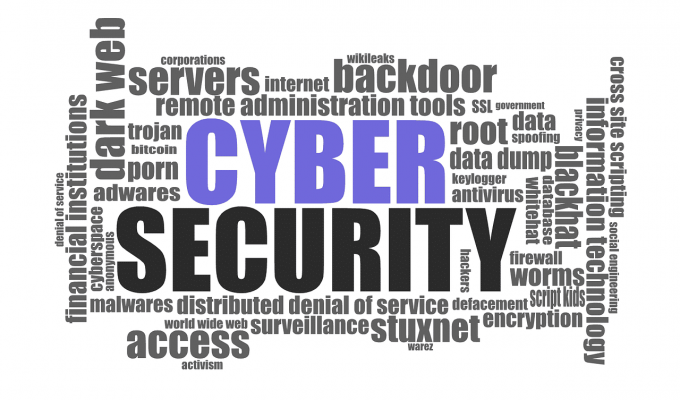
Security Awareness and Training
Security Awareness and Training
In today’s digital landscape, where cyber threats are on the rise, individuals and organisations must prioritise cyber security to safeguard their sensitive information. One crucial aspect of cyber security is security awareness and training. This article aims to shed light on the significance of security awareness and training, providing valuable insights for those with limited knowledge in the context of cyber security in the United Kingdom.
Understanding Cyber Security
Before delving into the importance of security awareness and training, it’s essential to grasp the concept of cyber security. Cyber security refers to the protection of computer systems, networks, and data from unauthorised access, theft, damage, or disruption. Its primary goal is to mitigate risks posed by cyber threats, including hackers, malware, phishing attacks, and more.
The Human Factor in Cyber Security
While advanced technologies and security measures play a significant role in cyber defence, humans remain a critical element in the security equation. Cyber attackers often exploit human vulnerabilities, such as lack of awareness, negligence, or unwittingly falling for social engineering tactics. Recognising the impact of human behaviour, security awareness and training programs become indispensable.
Security Awareness
Security awareness refers to the understanding and knowledge individuals possess regarding potential cyber threats and the actions they can take to mitigate those risks. It involves educating users about safe online practices, recognising phishing attempts, protecting personal information, and adopting secure behaviours in day-to-day activities. By enhancing security awareness, individuals become more proactive in safeguarding themselves and their organisations against cyber threats.
The Benefits of Security Awareness
Mitigating Risks: By promoting security awareness, individuals become more cautious about their online activities, reducing the chances of falling victim to cyber-attacks. Recognising potential threats empowers individuals to make informed decisions, such as avoiding suspicious emails, using strong passwords, and updating software regularly.
Additionally, practicing safe browsing habits, utilising two-factor authentication, regularly backing up important data, and employing reputable antivirus software are essential measures in safeguarding against cyber threats in today’s interconnected world.
Creating a Cyber Security Culture
When security awareness becomes ingrained in an organisation’s culture, it fosters a proactive approach towards cyber security. This collective consciousness encourages employees to report suspicious incidents promptly, follow established protocols, and remain vigilant against emerging threats, ultimately strengthening the organisation’s cyber defence.
Protection Beyond the Workplace
Security awareness not only benefits organisations but also extends to individuals’ personal lives. By practicing secure habits at home, individuals can protect their personal data, online accounts, and devices from cyber threats, creating a safer digital environment for themselves and their families.
Training Programs
Complementing security awareness initiatives, training programs provide individuals with the knowledge and skills required to navigate the ever-evolving cyber threat landscape. Training programs cover various topics, including: a) Recognising and Reporting Cyber Threats: Individuals learn to identify phishing attempts, suspicious websites, and potential malware, and report such incidents promptly to the appropriate authorities. b) Secure Password Practices: Training emphasises the importance of strong, unique passwords and educates individuals on techniques such as two-factor authentication to enhance account security. c) Safe Internet Usage: Individuals are educated on safe browsing practices, social media privacy settings, and the risks associated with downloading files or clicking on unknown links. d) Incident Response: Training equips individuals with the knowledge to respond effectively in the event of a cyber security incident, minimising the potential impact and facilitating swift recovery.
Continuous Learning and Adaptation
Cyber threats are ever-evolving, necessitating the need for continuous learning and adaptation. Security awareness and training programs should be ongoing, keeping individuals informed about emerging threats, industry best practices, and new technologies. By staying up-to-date, individuals can proactively protect themselves and their organisations against the latest cyber threats.
Security awareness and training play a vital role in strengthening cyber security defences. By fostering security awareness and providing comprehensive training programs, individuals and organisations can better protect themselves from cyber threats, create a culture of cyber security, and contribute to a safer digital environment. Continuous learning and adaptation are key to staying one step ahead of cyber criminals in the evolving cyber landscape

Incident Response and Recovery
Incident Response and Recovery
Preparation
This phase involves establishing an incident response plan that outlines the roles, responsibilities, and procedures to be followed during a security incident. It includes defining communication channels, identifying critical assets, and ensuring the availability of necessary tools and resources.Detection and analysis
In this phase, cyber security tools and monitoring systems are utilised to identify potential security incidents. Once an incident is detected, it is analysed to determine the nature, scope, and severity of the breach. This step helps in understanding the impact on the organisation and assists in formulating an effective response strategy.Containment and eradication
After analysing the incident, the focus shifts to containing the breach and preventing further damage. This involves isolating affected systems, removing malicious software, and patching vulnerabilities that may have been exploited. The aim is to stop the attacker’s access and eliminate any traces of compromise.Recovery and restoration
Once the threat has been neutralised, the next step is to recover the affected systems and restore normal operations. This may include restoring data from backups, applying necessary security updates, and conducting thorough testing to ensure the integrity of the systems.Lessons learned and improvement
After an incident has been resolved, it is essential to conduct a post-incident review. This allows organisations to analyse the effectiveness of their response efforts, identify areas for improvement, and update their incident response plan accordingly. Lessons learned from each incident can help in strengthening the overall cyber security posture of the organisation. In summary, incident response and recovery in the context of cyber security involve the timely detection, analysis, containment, and recovery from security incidents. By having a well-defined incident response plan and a competent incident response team, organisations can effectively minimise the impact of cyber security incidents and safeguard their systems, networks, and data.
Content filtering
Content filtering
Cyber security solutions encompass more than just endpoint antivirus platforms. In today’s digital landscape, it is essential to maintain control over the websites that your staff can access, regardless of whether they are working from home or in the office. This control is crucial for both ensuring security and optimising productivity.
One critical aspect of the Internet is the Domain Name System (DNS), which translates numerical IP addresses into human-readable website addresses. For instance, Google’s IP address is 172.217.16.227. When you type “www.google.com” into your web browser, a DNS server resolves this address to the corresponding IP address, allowing you to access Google’s webpage.
DNS filtering is a powerful tool in the realm of cyber security. It involves analysing the traffic to and from your network, using basic operational technology, to give you granular control over the websites, content, and traffic that your employees can interact with at any given time. By implementing DNS filtering, you can secure your organisation’s corporate assets, mitigate risks throughout your supply chain, and safeguard your domain infrastructure.
To strengthen your cyber security defences, our expert team will configure endpoint DNS filtering. This configuration will not only block inappropriate content from reaching your network via web browsers but also proactively blacklist malicious websites and files at their source. By doing so, the risk of targeted cyber-attacks can be minimised, and your organisation can operate in a safer and more secure online environment.
By prioritising cyber security measures such as DNS filtering, you can ensure the protection of sensitive data, prevent unauthorised access to your network, and safeguard against the ever-evolving threat landscape. With a comprehensive approach to cyber security that includes DNS filtering, you can enhance the overall resilience and integrity of your organisation’s digital infrastructure.
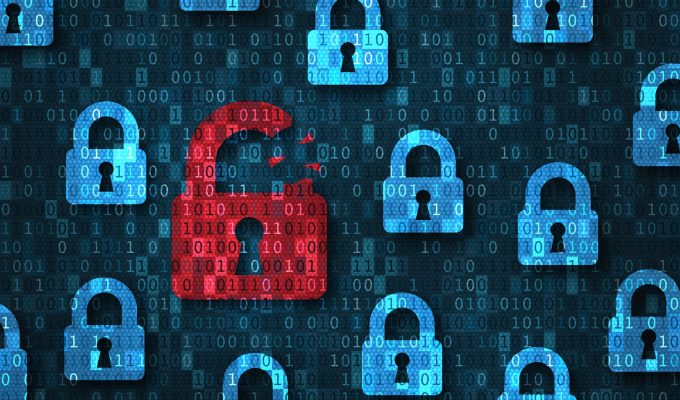
Monthly Vulnerability scanning
Monthly Vulnerability scanning
Vulnerability scanning plays a crucial role in ensuring cyber security for businesses. In the context of cyber security, vulnerability scanning refers to the process of systematically assessing and identifying potential weaknesses and security flaws in the services or devices that are accessible to the Internet. These are referred to as “public facing” assets or software, as they are visible to anyone connected to the Internet.
To protect your organisation from cyber-attacks, it is essential to regularly scan your entire public-facing operation. Our Vulnerability Scanning service performs this task on a monthly basis. It conducts comprehensive scans to detect any threats that may compromise the security of your organisation. This service relies on a database of threat intelligence, which accumulates knowledge about various vulnerabilities and exploits. By leveraging this intelligence, we can identify potential security loopholes and close any backdoors that could provide unauthorised access to your network.
The aim of vulnerability scanning is to enable sophisticated risk management. It involves a meticulous and methodical approach to thoroughly examine your network and ensure that all potential vulnerabilities are addressed. By conducting monthly vulnerability scans, you can proactively protect your business by enhancing your understanding of your network’s security posture. This allows you to secure your valuable data and take appropriate measures to mitigate potential threats before they materialise.
Our vulnerability scanning service offers blanket coverage for all your public-facing services, assets, and systems. This means that every component of your online presence that is exposed to the Internet will be thoroughly scanned to identify any potential vulnerabilities. By employing cutting-edge threat detection techniques and performing in-depth risk analysis, our service aims to provide you with comprehensive protection and peace of mind.
In summary, vulnerability scanning is a critical aspect of cyber security that helps organisations identify and address potential weaknesses in their public-facing services and systems. By conducting monthly scans and leveraging threat intelligence, businesses can stay one step ahead of cyber threats, secure their valuable data, and effectively manage their overall risk exposure.

Cyber Essentials/Cyber Essentials Plus certification
The UK Government believes that being Cyber Essentials certified helps to prevent around 80% of cyber-attacks. Gaining Cyber Essentials certification is crucial in ensuring that your data, assets, systems and networks are as secure as they can reasonably be. Our team will guide you through achieving Cyber Essentials/Cyber Essentials Plus accreditation without the need to sink resources into testing and re-testing, network reconfiguration or endless amounts of compliance documentation.- End-to-end Cyber Essentials and Cyber Essentials Plus consultation and implementation
- Highly experienced staff familiar with all UK Government standards
- Minimal disruption and zero downtime
- Clear, concise documentation
Sound advice from accredited experts
Depending on your contract, we’ll handle everything for you – from an initial self-assessment to external certification by an approved auditor. We’ve guided hundreds of clients through Cyber Essentials certification, and we understand what it takes to build a resilient, compliant network – either from scratch or by adapting existing working practices and technical configurations.Penetration testing
A penetration test, also known as a ‘pen test’ is a rigorous external audit conducted on a public-facing network that’d designed to simulate a broad range of potential attack vectors. Penetration tests are conducted with the sole purpose of exploiting flaws in network architecture, in order to reveal ways in which threat actors would be able to gain unauthorised access to systems and dataGuaranteed peace of mind
We’ll conduct a comprehensive analysis of your public-facing infrastructure and provide a detailed report that tells you where improvements need to be made, and where you should be focusing your cybersecurity efforts. Annual penetration testing isn’t a ‘must-have’ but conducting a yearly scan can be of great benefit towards regulatory alignment, meeting your compliance objectives and fulfilling the requirements of a Cyber Essentials Plus certification, or cyber insurance policy.- Rigorous internal and external penetration testing
- Regulatory alignment
- Achieve
- Comprehensive audits that expose network vulnerabilities

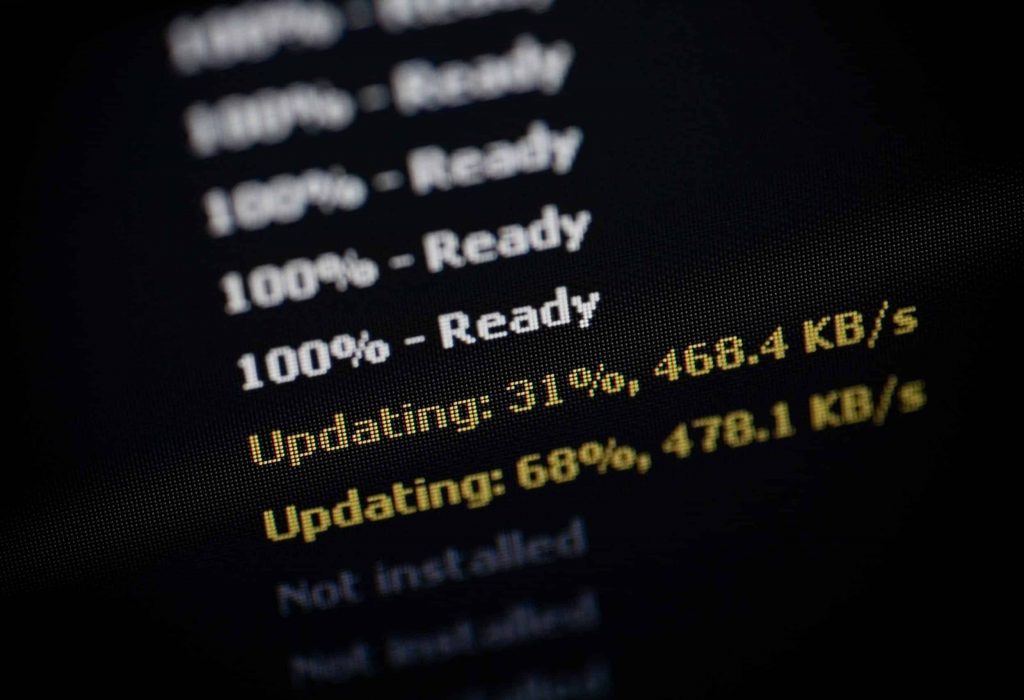
Patch management
Your networks, assets and industrial control systems need regular updating (patching) to increase resilience against potential attacks and ensure that your organisation is getting the most out of its commercial assets. Cybercrime flourishes when companies fail to patch their network as and when updates are released by vendors.Technological expertise
Our Patch Management service represents the first line of defence against known exploits and covers updates for over 120 software vendors, including all Microsoft platforms, Adobe, Chrome, Firefox, Skype and Zoom. Our team will ensure that, whenever Windows updates are released, they’re applied promptly, and in a way that doesn’t disrupt your staff or cause any downtime to critical systems. Our cyber security team has a deep understanding of common security flaws, such as peer-to-peer (P2P) filesharing platforms. Our patch management software will flag up any applications that are out of date, reducing the risk of backdoor exploits and keeping your digital assets running smoothlySecurity Information and Event Management (SIEM)
If endpoint security and DNS management are the first lines of defence, then SIEM works in the background to analyse log files from business-critical systems – such as AWS, Microsoft 365, Salesforce, G Suite and Slack – to ensure that suspicious behaviour is not going unchecked.
SIEM is often a key component of obtaining ISO certification or staying on the right side of industry-specific regulations within industries that deal with a large amount of Personally Identifiable Information (PII) such as the Legal, HR or Financial sector. Log management is also a prerequisite for certain cyber insurance policies.
- Granular analysis of key systems
- In-depth monitoring of known exploits
- Dedicated Security Operations Centre
- Cover for most major commercial software vendors
- Onsite services and cloud-based IaaS and PaaS platforms
Compliance solutions you can rely on
All of our SIEM activities are handled on behalf of our client’s staff in our Security Operations Centre, who are tasked with analysing event logs and granular datasets to ensure that no stone is left unturned, and malicious activity is uncovered, however well-hidden it may be.


Firmware Update Management
Every piece of network hardware relies on a piece of software called ‘firmware’, that manages the device and controls how it’s operated. Everything from network switches to routers, firewalls, printers and Uninterruptible Power Supplies (UPS) rely on a regular set of firmware updates to ensure that they’re functioning in the way the vendor intended them to, and they don’t present an adverse security risk simply by existing on your network. Organisations need to ensure that every single device that operates on their network has the latest version of its firmware installed, or at the very least, has been considered for an upgrade.Expert advice on a range of devices
Our team will work hand-in-hand with an authorised asset list and manage updates to your devices’ firmware as and when they become available from the vendor. We’ll make sure that you understand what the implications are of upgrading and respond to any queries you may have regarding functionality and useability.Call us today
Cybersecurity services should be front and centre of any company’s IT plan. If you fail to secure your assets, systems and data from unauthorised access, you run the risk of significant financial and reputational damage or even closure.
As a responsible service provider, we’ll construct an end-to-end security operation that ticks every last technological and commercial box.
Call us today for a free security consultation. We’ll take a look at your current setup and tell you where you need to make improvements. We’re always happy to help.
